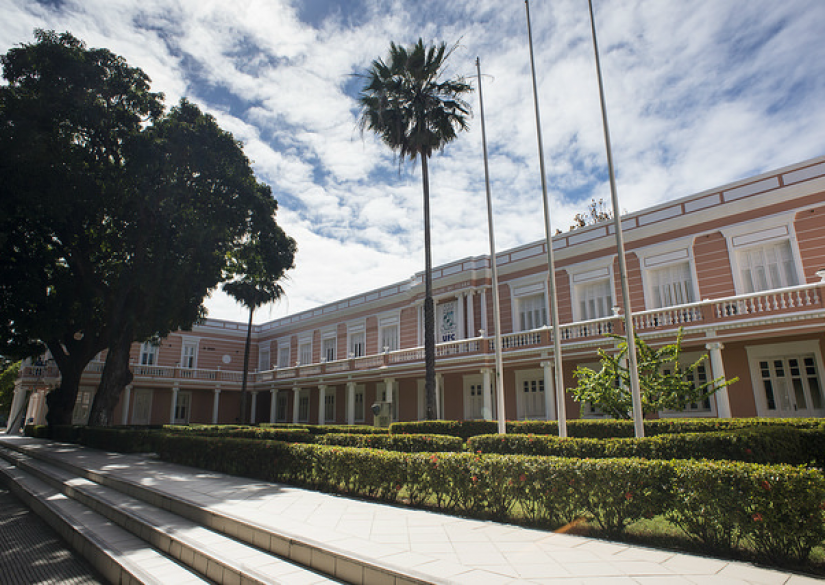Student Perspective
By: Pearl Finkelzon, Master’s in Canadian Studies and Indigenous Studies | Trent University, Canada
From April 7-12, 2025, I was able attend the International Institute for Environmental Science (IIES) 9th Annual Science & Policy Workshop and 8th International Graduate Student Forum in South Africa. This was my second conference with the IIES, and it was great to re-connect with folks and see the new changes. This year’s main theme was Improving Water Security and included topics of emerging and priority contaminants, mitigating climate change, sustainability challenges, and addressed the IIES pillars: Environmental Health, Environmental Policy, Environmental Process, and Green & Novel Technology.

I was presenting on Environmental Health during Session 9: Community & Well-being, my presentation addressed Mending the Metabolic Rift Through Community Gardens. It covered topics of urban design and human well-being by introducing the concepts of Blue Zones, hotspots in the world with higher rates of longevity and happiness as folks age, and Ebenezer Howard’s concept of Garden Cities (1898), self-sufficient cities combining urban and rural living. Bringing together theories with data collected from my research to create an imagined future or potential city/neighbourhood redesign taking into account human well-being.
Image: Pearl Finkelzon presenting her research topic “Mending the Metabolic Rift through Community Gardens”.
From April 6th to 8th we were in Johannesburg, South Africa. We were to be about 100 participants from 22 institutions from 14 countries. The University of Witwatersrand (Wits) hosted the Science & Policy Workshop on April 7th and 8th. There were daily opening sessions to introduce some of the themes of discussion and introduce different perspectives. This was followed by parallel sessions with presentations covering various themes. This allowed for all to learn from one another both through knowledge sharing and acquisition. It was great to learn more about the research being conducted at Trent and find similarities with research from institutions around the world. This year’s conference engaged with a holistic viewpoint of environmental science demonstrating the need for practical and on the ground cooperation both between humans, peoples, sciences and environments.
The Graduate Student Forum was held at the Wits Rural Campus in Acornhoek. This year it was set up differently, rather than having students present their research individually, there was a more social co-learning setup. The mornings of April 10th and 11th began with three-minute ‘speed introductions’ as students got to know one another and learned more about each others’ research.
Image: Graduate Students and staff taking part in one of the introductory sessions in Acornhoek, South Africa.

It was very interesting to learn about the different topics and see some similarities despite being from universities across the world.
This was followed by practical hands-on workshops on April 10th as we did some fieldwork collecting and sampling water in two different locations and observing some testing in the laboratory and then using QGIS mapping technology to create local catchment maps on April 11th. The afternoons were dedicated co-design and co-creation sessions mapping out eight different cities in South Africa and re-imaging their water futures. This was a fun activity as folks had different backgrounds and interests and were from different countries, so it was sometimes a challenge to collaborate but very interesting to share perspectives and opinions as we combined our knowledge and worked together to create environmental solutions.

On April 12th, we presented our re-imaged water cities and then separated into groups to head to our excursions. Folks had the choice between the Blyde River Canyon cruise or a safari. I chose the river cruise as did a lot of the Wits University students. Blyde River Canyon is the third biggest canyon in the world and the biggest one with greenery and water. We saw the dam and learned about the region’s history and superstitions.
Image: Dr. Simone Dahms-Verster (Wits University) and two students taking water samples.
It was also an immersive experience driving to and from the excursion as we drove fast down bumpy roads and had South African music that the Wits students selected playing loudly on the speakers.


Image (left): Professor Craig Sheridan (Wits University) leading the group in the water sampling session; Image (right): Beautiful views within the Blyde River Canyon.
Overall, this years’ International Institute for Environmental Studies conference in South Africa was awesome! I really enjoyed re-connecting with professors from other institutions that I had met at the previous conference and meeting other Trent students. It was great that folks knew each other and were open to networking and staying connected after the conference. It was wonderful to learn and get re-inspired by all that is being done in academia, specifically research being conducted in an interdisciplinary and international way. I found that this year, there was a bit less time to explore the cities we were in, but there was scheduled free time to socialize with time to swim, play cards, have bonfires, and explore nature. I really enjoyed the social learning aspect of this conference and hope to stay connected with IIES after I graduate. I would highly recommend to anyone interested to get involved with IIES and continue to learn, share and co-create on an international scale.







